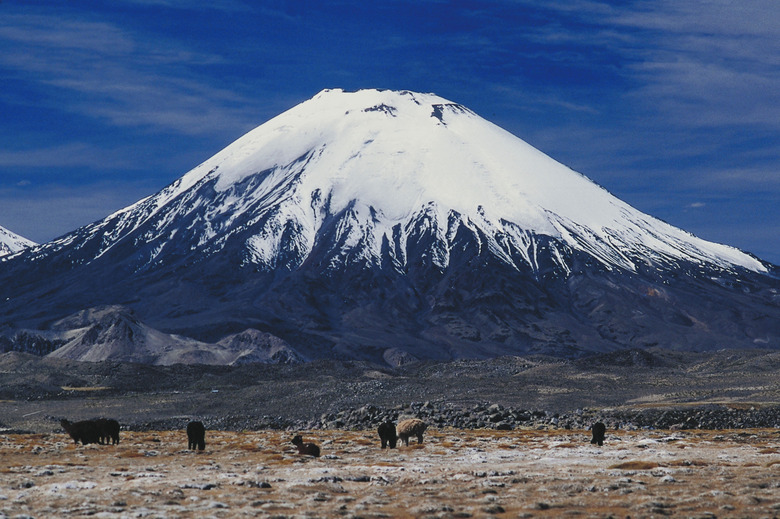How Do Earthquake Activities Influence The Formation Of Mountains?
Earthquakes occur when rocks beneath the ground abruptly move positions. This sudden motion makes the ground shake, sometimes with great violence. Although harboring destructive potential, earthquakes are one of the essential geological processes contributing to the formation of mountains.
Relationship to Tectonic Plates
Relationship to Tectonic Plates
Earthquakes most often occur near the edges of tectonic plates. These enormous slabs of crustal rock — as large as countries or even entire continents — underlie all of the Earth's surface, extending some 70 kilometers (43 miles) deep. Tectonic plates may hold landmasses, water bodies or both. The plates aren't static — that is, they move around, and their movements usually aren't smooth or continuous. A plate may seem to sit still for many years, but then lurches forward a certain distance in a matter of seconds. It is this abrupt shifting of plates against one another that is responsible for most earthquakes. Over millions of years, the accumulation of many plate shifts result in significant changes to the face of the Earth — including the formation of mountains.
Influence of Plate Boundaries
Influence of Plate Boundaries
How exactly the plates shift to build mountains depends on the kind of boundaries that exist between them. There are three types of boundaries: divergent, convergent and translation or transform. Of these, one type in particular — convergent — is responsible for much of the formation of mountains. At a convergent boundary, two plates smash into each other head-on. If both plates carry landmasses, the compressive pressure from the colliding plates forces the land to uplift, creating mountains. If the two plates contain oceans, or if one plate contains an ocean and the other contains a landmass, special types of mountains often form: volcanoes. Divergent boundaries also produce volcanoes, but most are located undersea, where they're known as mid-ocean ridges.
Propelled By Heat
Propelled By Heat
There is a greater force at work beneath the plates that propels them to move and in doing so produce earthquakes and build mountains. This force is heat, in the form of convective cells that circulate upward from the mantle and then sink back downward again. In spots where these heat currents sink, plates are pulled together into convergent boundaries. In locations where these heat currents flow upward, divergent plate boundaries form. It is this heat cycle that drives tectonic activity.
Geographic Examples
Geographic Examples
The highest mountain range in the world — the Himalayas — formed and continues to form as two plates, the Indian plate and the Eurasian plate, converge. A particularly significant fault in central Nepal causes rare but sizable earthquakes as the continental collision continues. Other locations where converging plates are creating mountains include Chile and Japan, both of which are susceptible to powerful earthquakes. Places where colliding plates have in the past formed mountain ranges include the Alps, the Ural Mountains and the Appalachian Mountains. An example of a divergent boundary containing mountains is the mid-Atlantic ridge, most of which lies underwater but a portion of which juts above the ocean as the island of Iceland.
References
- University of California Berkeley Space Science Laboratory: Earthquake
- California Institute of Technology: Earthquakes and Mountains
- U.S. Geological Survey: Earthquake Facts
- U.S. Geological Survey: Earthquake Facts & Earthquake Fantasy
- Indiana University: The Earth: Differentiation & Plate Tectonics
Cite This Article
MLA
Harris, Amy. "How Do Earthquake Activities Influence The Formation Of Mountains?" sciencing.com, https://www.sciencing.com/earthquake-activities-influence-formation-mountains-22552/. 24 April 2017.
APA
Harris, Amy. (2017, April 24). How Do Earthquake Activities Influence The Formation Of Mountains?. sciencing.com. Retrieved from https://www.sciencing.com/earthquake-activities-influence-formation-mountains-22552/
Chicago
Harris, Amy. How Do Earthquake Activities Influence The Formation Of Mountains? last modified August 30, 2022. https://www.sciencing.com/earthquake-activities-influence-formation-mountains-22552/
